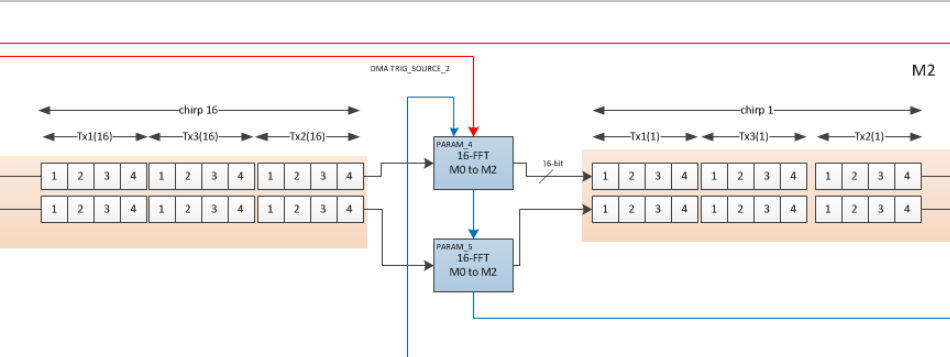When 1D-FFT makes a 256-FFT, and it's reflected in 256bins in L3_Radar_Cube(256*(3*4*16)). But when it's 2D-FFT, in the programm can man see it's 16-FFT, but it's not reflected in the image named "datapath_2d_detailed_elevation" ,in that pic the data in M0(2*(3*4*16)) after 2D-FFT still a 2*(3*4*16) matrix ,and although finally after SUM it's a 2*16 matrix, but i think it represents 16 chirps, SO how to explan that?
And talks to 16 chirps, does It correspond to "discrete single in 2D-FFT(online lesson)",and the time interval between 2chirps corresponds to the interval between 2 sampls, In other words, the 2D-FFT uses the phase (for ω) of 16 chirps, so the FFT-result for 12 virtual antennas are same, SO is my understanding right?
And as it says in the online lesson, the 2 Axis of L3_RangeDopplerLogMag are stand for range and velocity, so 256 -> range, 16-> velocity , SO isn't it bad for velocity's accuracy(case i think 16 is too samll)


